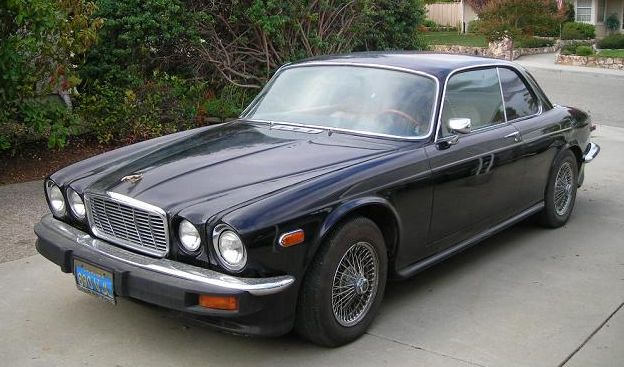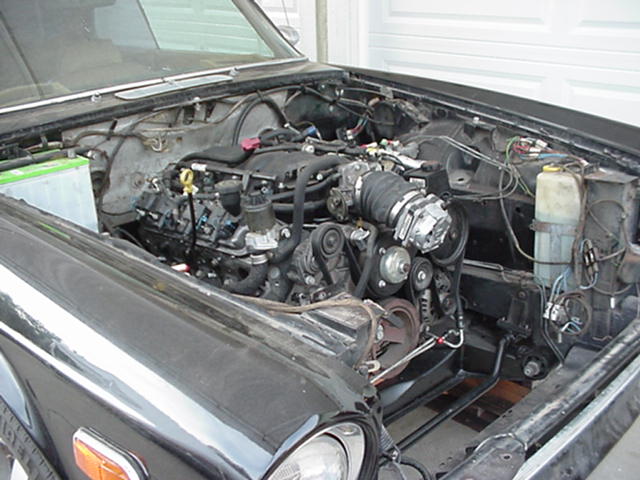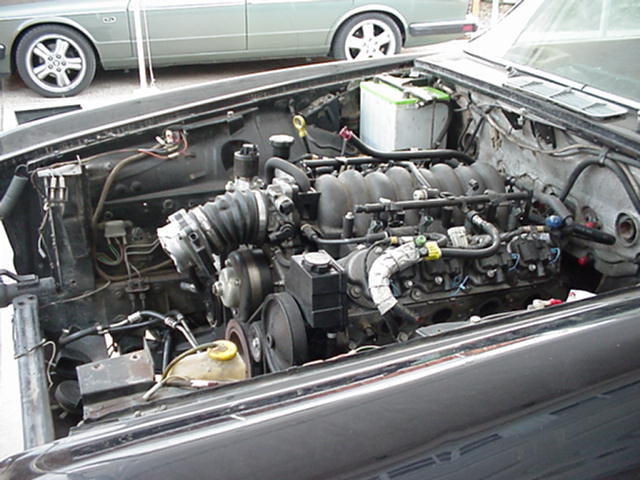
Telephone: 408-839-5569
Email: (Click Here) Andrew@JaguarSpecialties.com
Last Update 7-2-24
XJ6 and XJS LS Engine Conversions- LS1 LS2 LS3 LS6 LS7Note to readers: Kits are now available for LS engine conversions into 70-87 XJ6 (sedan and coupe) and 76-96 XJS cars. These articles are here to give you a flavor for what's involved in doing an LS engine conversion on your Jaguar, and I will be adding more on the different aspects of the projects from time to time. After driving my (finished) LS1-Jaguars for a while now, I can attest that the power, torque, flexibilty, and smooth reving of these engines are a perfect match these cars. This is a fantastic conversion opportunity any XJ6 or XJS, and with the information in our conversion manual, and the kit and supporting parts, a Jag owner could do this conversion on his own car easily. I hope you enjoy the different installments- please feel free to Email or call with questions, etc.,.
Part 1
Beginning in 1998 (and 1997 with the Corvette), GM began to roll out the new fully redesigned small block V8 engines, then called the LS1. This completely new design shared virtually no components or design features with the older small blocks. For the Camaro and Corvette (and later GTO) applications, the engine was all aluminum (block and heads), with a separate version developed for trucks using a similar, but cast iron, block. In the now 10 years since its introduction, the LSx series of engines have been recognized as a quantum leap forward in power, efficiency, and flexibility of applications. With displacements ranging from 4.8L all the way up to 7.0L, there are a lot of possibilities. And as a result, many Jaguar owners (including me) became interested in finding out what it would take to use this engine in one of our cars. As of the writing of this first installment, there are no commercially available kits or parts to swap the LSx engine series into any Jaguar car. The goal of this new project will be to develop a kit and series of other related parts to make this conversion possible into the 70-87 XJ6 and XJ12 sedans (and coupes), and the 76-96 XJS coupes and convertibles. As the basis for this special project, I wanted a something different car than I had used before. After a little looking, I found a 1975 XJ6C locally that had actually been converted years ago to old-style carbureted Chevy V8 power, but also was a little interesting on its own. As you can see in the attached pic, the car has a very unusual molded body kit all around, which looked great, even with the somewhat unusual choice of wire wheels (they'll be going away...). The original vinyl top is long gone, and the whole car was repainted in a pearl black color. Inside the original biscuit interior was still in good shape. Those bumpers will have to go, but it's a neat car. It has its share of typical rust issues for this model, and I’ll get to those in time. The Chevy drivetrain was pulled out and sold off, as well as all of the V8 conversion pieces (mounts, radiator, etc.,.), keeping only the one piece I anticipated might be reused- the driveshaft. After some major engine compartment cleaning and detailing (and a full front suspension rebuild with all of Jaguar Specialties upgraded parts, to be covered later), the car was ready for the next step. What's important here is that the Jaguar XJ floor pan (be in XJ6 Series 1, 2 or 3) varied little over it's life span, so any parts developed for this XJ6C (basically the same pan as an XJ6 S1) would generally be usable on the other XJ models (XJ6 and XJ12 through 1987 in the US). Also, this knowledge would transfer to the XJS cars, so a planned future XJS LS1 conversion would be reasonably straightforward (more on the XJS in Part 2). The “organ donor” for this first car was a wrecked (but still drivable) 1998 Camaro Z28 with an LS1/automatic drivetrain, It was brought in and carefully stripped of all the key drivetrain related pieces. I did a lot of research about the LSx engines and the various swaps folks are doing with them, and it seems there will be 4 key problem areas to solve: 1) Engine mounting- completely different than earlier Chevy engines. Several companies offer adaptor plates that bolt to the LSx block and allow installation of old style Chevy mounts in near original locations for conversions into older models. We’ll see if these will help on this conversion. The transmission mount situation will also be a question- this second generation 4L60E (with a removable bellhousing) uses a totally different rear tail housing than earlier 4L60E’s, and won’t work with existing Jag conversion pieces. 2) Oil pan- few, if any, of the GM original equipment (1 piece cast aluminum) oil pan designs used on the various applications of the LSx seem to work with earlier vehicle swaps. In almost every situation a custom, or specially modified original pan is required to clear crossmembers, steering, etc.,.. Although these options do solve the problems, the custom pans aren’t that practical (most require a remote oil filter mount- a hassle to plumb and use), or the modifications to stock pans can be expensive, depending on the scope of the changes. 3) Exhaust headers/manifolds- none of the originally available exhaust manifolds used on LSx engines seem like they have the required “center dump” characteristic we need for the Jag chassis, so custom headers may be needed, which can be a considerable cost. However, with the LS based engines being used in so many different GM platforms now, there are a wide variety of different OE GM manifold styles available, one or more of which will work for us. 4) Accessory Drive/Accessory Locations- Although the LS1/LSx engines have been used in many different car and truck applications, the accessories (and specifically the AC compressor) are mounted down low (or make that, very low). This has been a major clearance problem for nearly every LSx engine swapper. There are many aftermarket accessory drive systems out there to reposition the accessories higher, but they are all VERY expensive, and their reliability may or may not be up to snuff. My goal here is to use the stock Camaro accessory drive system, making whatever small adjustments are needed along the way. Going that way will be the best for keep costs down, and reliability high. And of course there are a multitude of other small issues to address as expected. On the bright side, just like the LT1 conversions, it appears that the entire Camaro cooling/AC package (radiator, fans, AC condensor, etc.,.) can be used nearly as is into the Jag, so that will save a lot of effort. As with the earlier Chevy small blocks, aftermarket parts availability and support for the LSx engines is very good. The ultimate goal here is to complete this conversion just as I’ve done on the earlier ones- use maximum amount of standard GM style parts for the job, and the minimum amount of special pieces. And just to give you a taste of where this is going, these last pics are of the LS1 in the car during one of the early test fits. More info on that and other details in the next installment.
|


